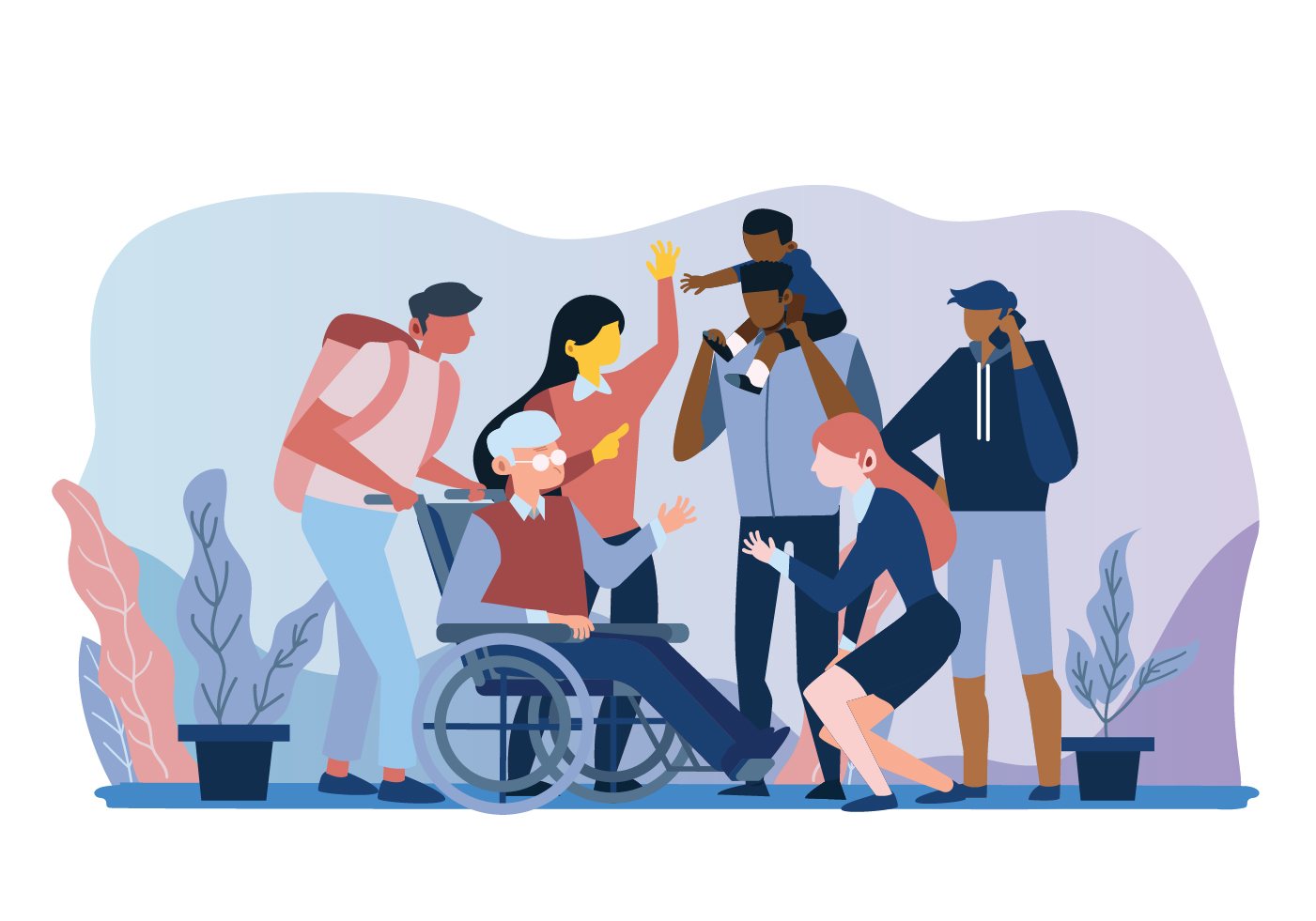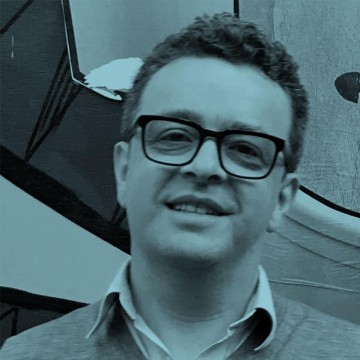
We all appreciate that diversity gets results—but why? When he worked at a major health services provider in Australia’s second city of Melbourne, Dr Martin Plowman pioneered a new way of thinking about who benefits from diversity and under what circumstances. This was based around the idea of workforce mutuality—that is, the idea that the benefits of diversity are greatest when the diversity of an organisation matches that of the community or stakeholder base it works within.
When he joined the Diversity Atlas team, Martin brought his expertise in mutuality and its benefits to our own diversity and inclusion analytics and advisory services. We talked with Martin about mutuality and why it’s a cornerstone value of Diversity Atlas in the work we do with organisations to maximise the benefits of their organisational diversity.

If you had to summarise the concept of workforce mutuality in a nutshell, what would it be?
Workforce mutuality is the extent to which the diversity of an organisation or a sector reflects the diversity of the community it works within.
Most people have heard of diversity and inclusion, but the concept of mutuality might be new to some. Can you tell us about how the term was first developed?
Before I joined Cultural Infusion I worked at an organisation called HealthWest Partnership, based in Footscray, in the heart of the western suburbs of Melbourne. For a long time the health sector had recognised that if the diversity of health professionals—people like doctors, nurses and other allied health practitioners—better matched the diversity of the communities they were serving, all sorts of good health outcomes were improved.
I was given the job at HealthWest to come up with a way to promote this ‘matchmaking’. One of the first things I did was to redefine the concept of diversity because I realised we weren’t just talking about making the health workforce more diverse for the sake of it—the aim was to build diverse workforces that were representative of the diversity of the community. That’s where the idea of workforce ‘mutuality’ came from.
Following that, I led an expert advisory group of academics, industry leaders and community members to produce a set of Standards for Workforce Mutuality, which were launched in 2018. Since then the Standards have been increasingly adopted by more organisations (you can download a free copy here). I joined Cultural Infusion at the start of 2019, where I have continued working on finding ways to support organisations to build their workforce mutuality with the community.
Which organisations really need to care about their workforce mutuality, and what do they stand to gain from it?
There’s plenty of evidence that when the diversity of the health and community services workforce is in sync with the community they are supporting, in fact, a lot of the health indicators of the community improve.
People from diverse communities are more likely to access health and community services and more likely to report satisfaction with improved health outcomes and services. Most of us know that if we want our services to be really good, they need to be made up of the people who use them. That’s the divide we want to close.
Recruiting from a diverse cross-section of the community opens up the talent pool of candidates to choose from. For community and health organisations this means an improvement in service access service delivery because a workforce that better reflects the diversity of the community and in that way be more responsive to their needs.
That makes intuitive sense in public service delivery but how well does it carry across to other sectors—policy-making agencies in the public sector, or in the private sector?
In the private sector, it’s long been established that teams made up of highly diverse people perform better than homogenous ones. Essentially, this comes down to more diverse teams being able to draw upon a larger pool of experiences and cultural understandings, allowing them to find more innovative and effective solutions.
When diversity is combined with mutuality, you have diverse teams that are more representative of the broader community—which means an organisation will better understand the needs of real people, and so find better and more relevant ways to respond to those needs. The same benefits would apply to policymaking agencies and the public sector. Who would know better about making relevant and useful policies than staff representing the people those policies are made for?
Thinking about which direction the benefits of workforce mutuality flow—say if I’m a bank or a retail chain, how does it help me to make sure that my frontline workforce, or even management, reflect mutuality with our customer base?
Again, this won’t be news to banks and other major corporates. Having public-facing staff and management who are representative of people in their customer base just makes good business sense. Customers and clients are more likely to trust staff from their own communities, and staff and management will have a better understanding of what their customers actually need.
Don’t take it just from me—one of the key members on the expert advisory panel who developed the Standards for Workforce Mutuality was Huss Mustafa OAM, the current General Manager of Multicultural Banking at Commonwealth Bank. Huss has been a champion for diversity in the business and community sectors for many years, and you can find out more about his reasons here.
Workforce mutuality is all about ensuring that the diversity of an organisation is ‘in sync’ with the community. By implication, in some cases, there may not be a need for a particularly diverse workforce if an organisation works with a homogeneous community. Does that mean that in some cases homogeneity should be the goal of workforce planning?
I think there are a very few particular cases where homogeneity—and in particular, cultural homogeneity—would serve a better purpose in an organisation than having a more diverse workforce.
One example would be in the Aboriginal community controlled health sector here in Australia. In this case, it definitely makes sense that having a workforce of doctors and other health professionals that are predominantly Aboriginal would be the better option—Aboriginal staff will have an understanding based on the lived experience of the specific needs of the community, and the resulting levels of trust would be higher.
But overall I think the aspiration for workforce mutuality isn’t just for ‘diverse people.’ It’s for the entire Australian community, which is growing more and more diverse by the day. One thing I’ve learnt from working in diversity and inclusion is that even within a community or group of people who might be homogenous in one way—say, the language they speak, or their cultural background—there’s always much more diversity than is obvious at first. Mutuality is also about recognising and celebrating the intricate mosaic of diversity that all of us contribute to in some way.
Finally, what are you looking at working on next in the space of mutuality?
The next big thing we’re working on at Cultural Infusion in the space of workforce mutuality is a mutuality index. Using diversity data collected from Diversity Atlas, we’ve developed an index that can measure the mutuality of an organisation by benchmarking it directly against the diversity of the community.
Basically, the workforce mutuality index will give an organisation a score ranging from 0 to 1, with 0 representing no mutuality with the community, and 1 representing ‘perfect’ mutuality. It’s a neat and completely empirical way of measuring just how much an organisation actually reflects the broader community.
We’ve tested the maths behind the index and are now working on a paper, but what we’d really liked to do is see this deployed in the organisations we work with, both in the public and private sectors, to really allow organisations to benchmark how they’re performing with regards to their workforce mutuality.
Diversity Atlas is a data analysis tool for measuring diversity in your workforce. It’s designed to inform diversity management strategies for businesses and organisations to thrive in a globalised world. Get in touch for consultation via [email protected]
Share this Post
